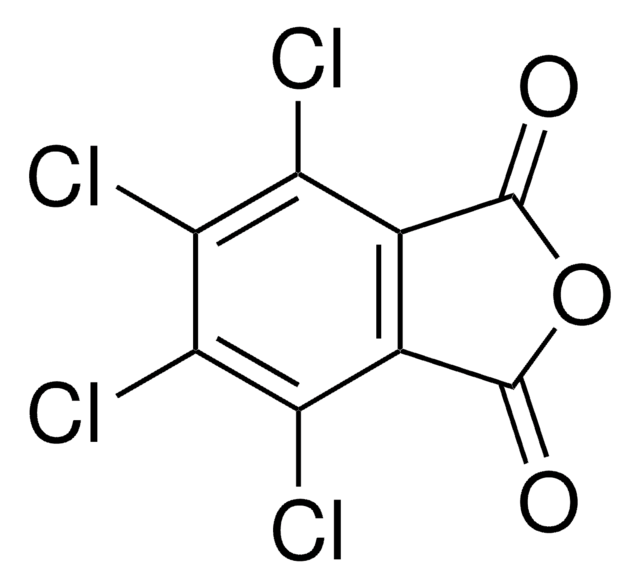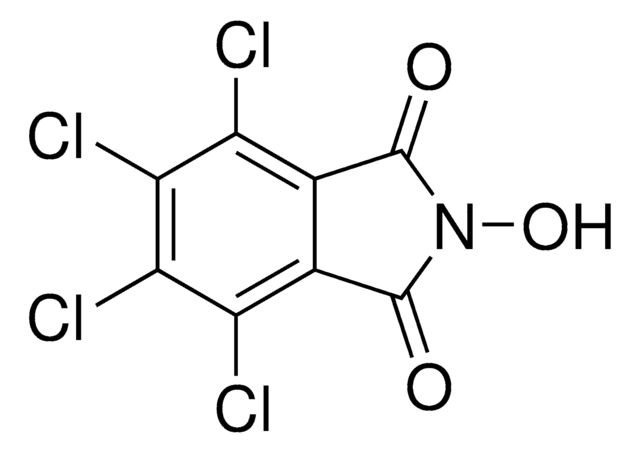215082
trans-1,4-Dichloro-2-butène
technical grade, 85%, remainder predominantly cis isomer
About This Item
Produits recommandés
Qualité
technical grade
Niveau de qualité
Pression de vapeur
10 mmHg ( 20 °C)
Essai
85%
Forme
liquid
Indice de réfraction
n20/D 1.488 (lit.)
pb
74-76 °C/40 mmHg (lit.)
Pf
1-3 °C (lit.)
Densité
1.183 g/mL at 25 °C (lit.)
Groupe fonctionnel
chloro
Température de stockage
2-8°C
Chaîne SMILES
ClC\C=C\CCl
InChI
1S/C4H6Cl2/c5-3-1-2-4-6/h1-2H,3-4H2/b2-1+
Clé InChI
FQDIANVAWVHZIR-OWOJBTEDSA-N
Vous recherchez des produits similaires ? Visite Guide de comparaison des produits
Catégories apparentées
Application
Autres remarques
Mention d'avertissement
Danger
Mentions de danger
Classification des risques
Acute Tox. 1 Inhalation - Acute Tox. 3 Oral - Acute Tox. 4 Dermal - Eye Dam. 1 - Flam. Liq. 3 - Skin Corr. 1B
Code de la classe de stockage
3 - Flammable liquids
Classe de danger pour l'eau (WGK)
WGK 3
Point d'éclair (°F)
127.4 °F - closed cup
Point d'éclair (°C)
53 °C - closed cup
Équipement de protection individuelle
Faceshields, Gloves, Goggles, type ABEK (EN14387) respirator filter
Faites votre choix parmi les versions les plus récentes :
Déjà en possession de ce produit ?
Retrouvez la documentation relative aux produits que vous avez récemment achetés dans la Bibliothèque de documents.
Protocoles
US EPA Method 8260: GC Analysis of Volatiles on SPB®-624 after Purge & Trap using "K" Trap, Fast GC Analysis
Global Trade Item Number
| Référence | GTIN |
|---|---|
| 215082-100G | |
| 215082-250G | |
| 215082-25G | 4061837082894 |
| 215082-5G |
Notre équipe de scientifiques dispose d'une expérience dans tous les secteurs de la recherche, notamment en sciences de la vie, science des matériaux, synthèse chimique, chromatographie, analyse et dans de nombreux autres domaines..
Contacter notre Service technique









